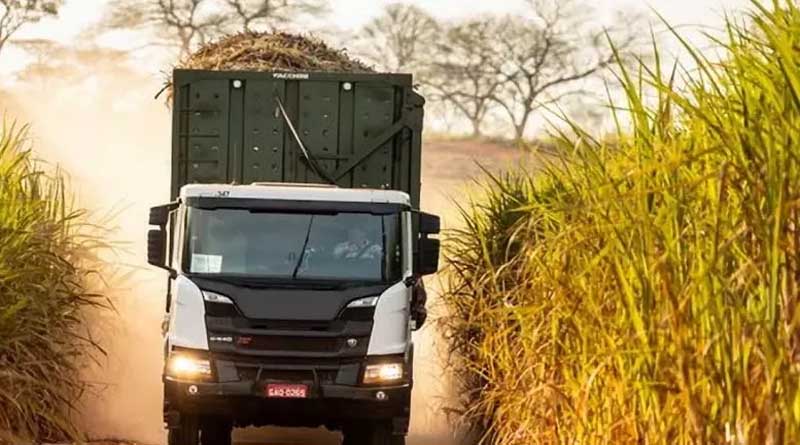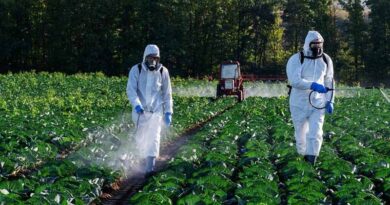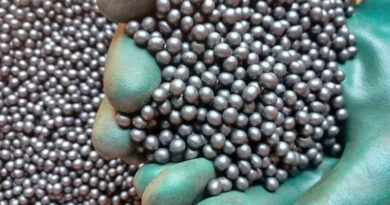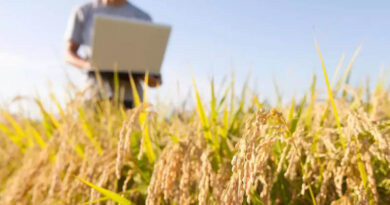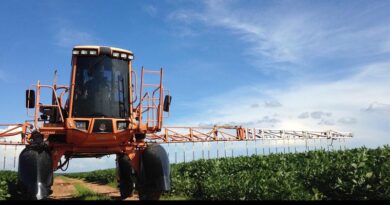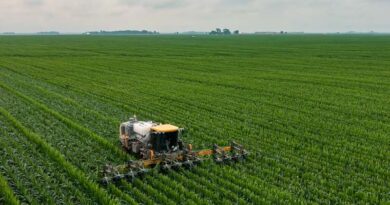Will There Be Storage and Logistics Problems in Brazilian Agriculture in 2024?
“It is a clear reason for Brazilian agribusiness to work on more robust logistics investment plans for the coming years…”
Marcos Rubin is the founder of Veeries, an agribusiness intelligence company specializing in generating value from data.
Rubin is a specialist in agribusiness, graduated in industrial engineering from the Federal University of Santa Catarina, with an MBA from Fundação Dom Cabral.
06 February 2024, Brazil: AgriBrasilis – Could storage and logistics problems be repeated in 2024?

Marcos Rubin – There was this risk at the beginning of the harvest, but since then a number of factors have eased this pressure. The drought and high temperatures in the Midwest at the end of last year caused three effects: first, reduced yields in some short-season soybean regions; then shortened the crops cycle, anticipating the harvest; Finally, it delayed the planting of medium and late cycle crops. This means that the harvest started earlier and will end later than last season, for a total production that should be more or less similar in volume.
AgriBrasilis – Could we see a situation of strong pressure on agricultural logistics again?
Marcos Rubin – It is necessary to keep in mind that the situation of strong pressure on logistics that we had last year, although it has everything not to be repeated this year, may return later on.
Considering the projections of planted area growth and an evolution of crop yield under normal development conditions, we may see again what happened in 2023: roads, terminals and port berths close to the capacity limit in Brazilian ports. It is a clear reason for Brazilian agribusiness to work on more robust logistics investment plans for the coming years.
AgriBrasilis – You said that we had a complicated start to the soybean harvest in Brazil. How is the situation now?
Marcos Rubin – The beginning of the harvest was indeed complicated. The weather was dry and warm in most of the Midwest, especially in the State of Mato Grosso. This has especially hurt early soybean areas, and the damage to yield potential is now being confirmed during the harvest. Medium and late cycle soybeans, however, developed under better conditions and can still have good levels of yield.
At least at this point, we believe in a harvest of a size very close to that of the previous one. We won’t have another production record, but we also don’t see a scenario as catastrophic as the one that a part of the market has been defending.
“…we can say that the profitability of farmers this season will be approximately half of what it was in the previous season.”
AgriBrasilis – Chinese soybean imports from Brazil are starting again with intensity. What has limited imports from China in recent years?
Marcos Rubin – Indeed, Chinese soybean imports exceeded 100 million tonnes in 2023. We can say that it was a return to normality after a period marked by restrictions, whether from the point of view of supply or demand, which limited imports by China to an average of 93 million tonnes annually in the last five years.
In 2018, the trade war began that limited Chinese purchases of American soybeans, creating a supply limitation. Almost at the same time came the African swine fever epidemic, which decimated 30% of the Chinese herd, reducing demand. Soon after, the 2019/20 U.S. crop suffered a 20% drop due to weather problems. Then came covid-19. What last year’s results show is that, with supply, and in the absence of demand shocks, Chinese soybean imports will continue to grow.
AgriBrasilis – Taking into account the drop in farmer’s margins in 2023, are we in a period of crisis, or of “adjustment” in the agricultural sector? What can we expect for the near future?
Marcos Rubin – We are at a time that can be considered an adjustment for agribusiness chains – and that is perfectly natural following a phase of high margins such as the one we have experienced in recent years.
Overall, we can say that the profitability of farmers this season will be approximately half of what it was in the previous season. It is true that, at other times in our history, these adjustment phases coincided with strong crises in the Brazilian agricultural sector. But that’s not necessarily going to happen now.
Brazilian agriculture has been consolidated and today is much more resistant than in the past, especially from an agronomic point of view. In addition, the management of rural properties has improved and the agricultural sector has more financing alternatives available than in the past.
Economically, the fact that Brazil is coming out of a monetary tightening cycle also helps. The adjustment will change some things, without a doubt: the rate of investment on the farm tends to fall and the dynamics of the input market itself, marked in recent years by very early acquisitions, tends to be altered. But the sector is very well positioned to get through this phase and emerge stronger for the next wave of growth.
Source: AgriBrasilis
Also Read: Best Agrolife to manufacture a combination of Trifloxystrobin, Thiamethoxam, and Thiophanate Methyl under the brand name Warden Extra
(For Latest Agriculture News & Updates, follow Krishak Jagat on Google News)

